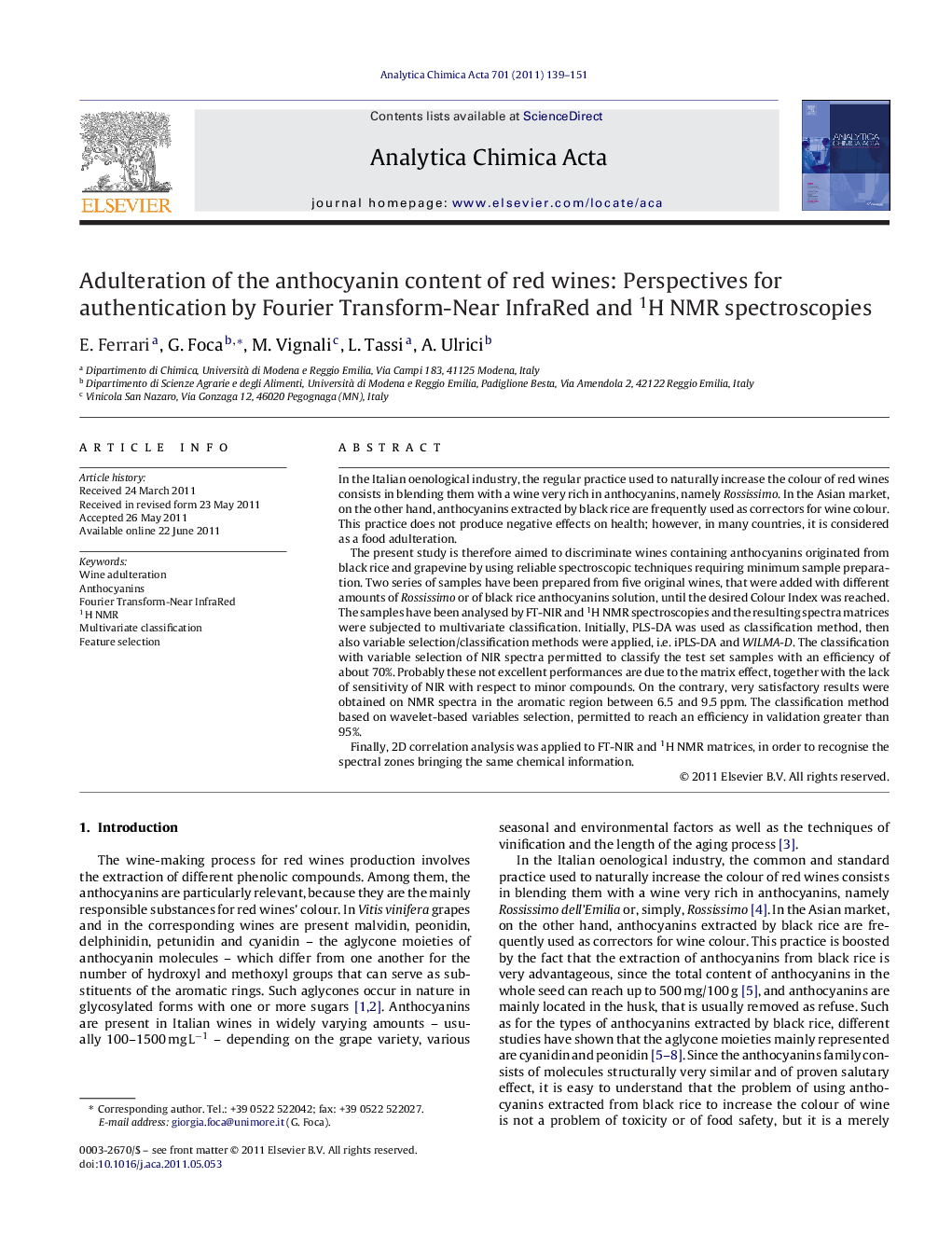| Article ID | Journal | Published Year | Pages | File Type |
|---|---|---|---|---|
| 1166608 | Analytica Chimica Acta | 2011 | 13 Pages |
In the Italian oenological industry, the regular practice used to naturally increase the colour of red wines consists in blending them with a wine very rich in anthocyanins, namely Rossissimo. In the Asian market, on the other hand, anthocyanins extracted by black rice are frequently used as correctors for wine colour. This practice does not produce negative effects on health; however, in many countries, it is considered as a food adulteration.The present study is therefore aimed to discriminate wines containing anthocyanins originated from black rice and grapevine by using reliable spectroscopic techniques requiring minimum sample preparation. Two series of samples have been prepared from five original wines, that were added with different amounts of Rossissimo or of black rice anthocyanins solution, until the desired Colour Index was reached. The samples have been analysed by FT-NIR and 1H NMR spectroscopies and the resulting spectra matrices were subjected to multivariate classification. Initially, PLS-DA was used as classification method, then also variable selection/classification methods were applied, i.e. iPLS-DA and WILMA-D. The classification with variable selection of NIR spectra permitted to classify the test set samples with an efficiency of about 70%. Probably these not excellent performances are due to the matrix effect, together with the lack of sensitivity of NIR with respect to minor compounds. On the contrary, very satisfactory results were obtained on NMR spectra in the aromatic region between 6.5 and 9.5 ppm. The classification method based on wavelet-based variables selection, permitted to reach an efficiency in validation greater than 95%.Finally, 2D correlation analysis was applied to FT-NIR and 1H NMR matrices, in order to recognise the spectral zones bringing the same chemical information.
Graphical abstract.Figure optionsDownload full-size imageDownload as PowerPoint slideHighlights• Aim of the work: to discriminate anthocyanins from black rice or grapevine in wine. • Two series of adulterated samples were analysed by FT-NIR and 1H NMR spectroscopies. • Feature selection-classification on NIR spectra reached a 70% prediction efficiency. • Feature selection-classification on NMR spectra reached a 95% prediction efficiency. • 2D correlation analysis recognised the zones bringing the same chemical information.
